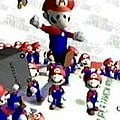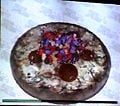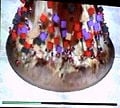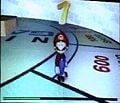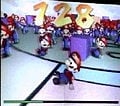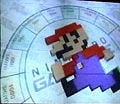Super Mario 128: Difference between revisions
mNo edit summary |
No edit summary |
||
| Line 6: | Line 6: | ||
|developer=[[Nintendo Entertainment Analysis and Development|Nintendo EAD]] | |developer=[[Nintendo Entertainment Analysis and Development|Nintendo EAD]] | ||
|publisher=[[Nintendo]] | |publisher=[[Nintendo]] | ||
|released=Cancelled | |released=Cancelled | ||
|genre=[[Genre#Platform|Platform]] | |genre=[[Genre#Platform|Platform]] | ||
|modes=Single player | |modes=Single player | ||
Revision as of 16:08, June 19, 2013
Template:Articleabout Template:Infobox Super Mario 128 is the name of a series of projects by Nintendo to create a sequel to Super Mario 64. The project experimented with new technology and ideas to incorporate into later games. A demo of the project was released by Nintendo. The demo featured 128 Marios on screen at once. Other features of the demo included the use of "rapid generation", later seen in the game Pikmin, and "sphere walking", seen in the The Legend of Zelda: Twilight Princess and Super Mario Galaxy. Some confuse Super Mario 128 with Super Mario Galaxy, a game that incorporates the experiments from the Super Mario 128 project. However, Super Mario Galaxy may be the culmination of the project's work, as Super Mario 128 sought to create an innovative sequel to Super Mario 64. Super Mario 128 could now be seen as Super Mario Sunshine or Super Mario Galaxy.
During his keynote speech at the Game Developers Conference 2007, Shigeru Miyamoto revealed what eventually happened to Super Mario 128. "What happened to Mario 128?" said Miyamoto at the end of his keynote, "most of you already played it...," then the screen showed that Mario 128 equaled Pikmin.
Also, a mission in Super Smash Bros. Melee is titled Super Mario 128, where the player must defeat 128 tiny Marios.
Gallery
- SM128 Image6.jpg
- Mario19.jpg
